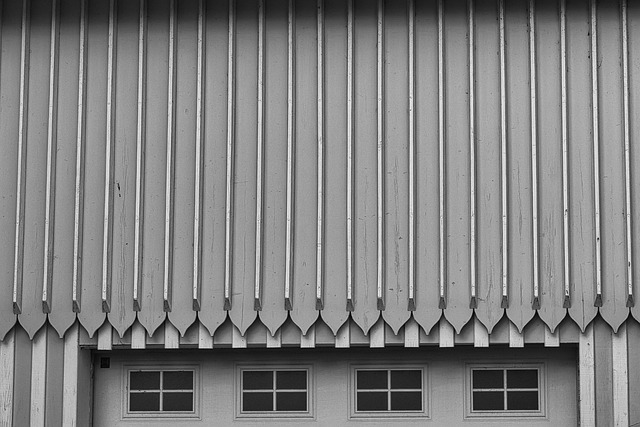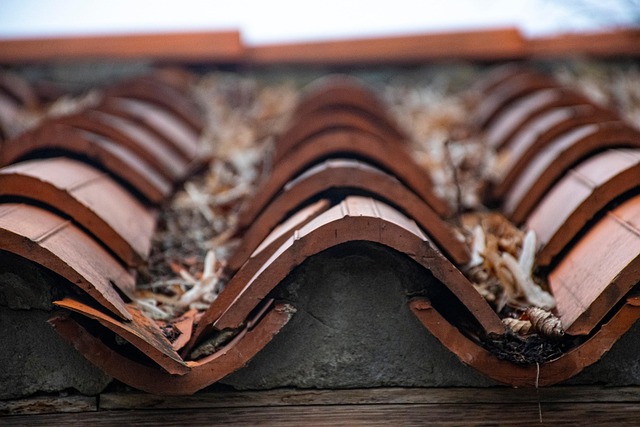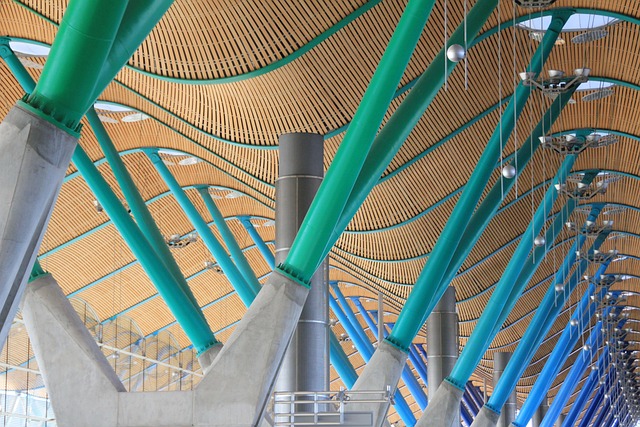Versatile Commercial Asphalt Shingle Roofing: Designs & Durability

Commercial asphalt shingle roofing is a popular, affordable, and durable option for businesses and p…….
Understanding Asphalt Shingle Roofing
Asphalt shingle roofing is a type of roof covering that consists of individual flat, rectangular units laid or placed on a roof deck in a shingle pattern. These shingles are typically composed of a fiberglass or organic core saturated with asphalt and coated with mineral granules. This composition not only provides a durable waterproofing barrier but also enhances the aesthetic appeal of a property. The history of asphalt shingles dates back to the early 20th century, evolving from earlier compositions like wood shakes and slate tiles, which were more labor-intensive and costly.
Asphalt shingles have become a staple in residential roofing due to their affordability, ease of installation, variety of colors and styles, and longevity. They are also relatively lightweight compared to other roofing materials, making them suitable for a wide range of building structures. The core components of an asphalt shingle include the base mat (fiberglass or organic), the asphalt impregnation, ceramic granules, and adhesives and sealants.
Global Impact and Trends
The global impact of asphalt shingle roofing is significant, with its usage spanning across various continents. North America, in particular, has a high penetration rate of asphalt shingles due to favorable climatic conditions and established manufacturing bases. Europe and Asia are also seeing an increase in the adoption of asphalt shingles, driven by urbanization, the availability of diverse designs, and the need for cost-effective roofing solutions.
Key trends influencing the trajectory of asphalt shingle roofing include advancements in material science, sustainability concerns, and evolving consumer preferences. The industry is responding to these trends with innovations such as recyclable shingles, enhanced durability, and improved energy efficiency. In colder regions, for instance, reflective asphalt shingles are becoming more common to reduce cooling costs during the summer months.
Economic Considerations
From an economic standpoint, asphalt shingle roofing represents a substantial market with significant annual sales and a wide array of manufacturers worldwide. The material’s cost-effectiveness makes it accessible to a broad consumer base, which in turn drives demand. Investment patterns in the residential and commercial sectors influence the market dynamics, with economic cycles often impacting the rate of new construction and roof replacements.
The role of asphalt shingle roofing within economic systems is multifaceted. It provides employment opportunities in manufacturing, distribution, installation, and maintenance. Additionally, the lifecycle costs of asphalt shingles—including initial installation, maintenance, and eventual replacement—must be considered when evaluating its economic impact.
Technological Advancements
Technological advancements have significantly improved the performance and sustainability of asphalt shingle roofing. These advancements include the development of lighter-weight shingles for easier handling and installation, enhanced adhesives for stronger bonding to roof decks, and shingles with reflective granules that improve energy efficiency.
Innovations in manufacturing processes have led to more efficient production and reduced waste. For example, some manufacturers now offer shingles that incorporate recycled materials, thereby reducing the environmental impact of disposal and landfill use. Future potential in this area includes the integration of smart technology, allowing for better monitoring and maintenance of roof health.
Policy and Regulation
Policies and regulations governing asphalt shingle roofing focus on building codes, environmental impact, and safety standards. In many regions, local building codes dictate the types of materials that can be used for roofing, with asphalt shingles often being a compliant option due to their fire resistance and longevity.
Legislative frameworks, such as the Leadership in Energy and Environmental Design (LEED) certification and the Energy Star program, incentivize the use of energy-efficient products, including roofing materials. These initiatives encourage manufacturers to develop shingles with higher reflectivity and better insulation properties, which can reduce the urban heat island effect and lower energy consumption.
Challenges and Criticisms
Asphalt shingle roofing faces challenges and criticisms related to its environmental impact, durability, and waste management. One of the main criticisms is the finite nature of the raw materials used in asphalt shingles, particularly petroleum for the asphalt and sand for the fiberglass mat. Additionally, the disposal of old shingles contributes to landfill waste, although recycling programs are mitigating this issue.
To address these challenges, the industry is exploring alternative materials and manufacturing processes that reduce environmental impact. Actionable solutions include increasing the recyclability of shingles, developing biodegradable options, and improving the lifespan of products to minimize replacement frequency.
Case Studies
Several case studies exemplify successful applications of asphalt shingle roofing. For instance, in the aftermath of natural disasters like hurricanes and tornadoes, asphalt shingles have proven their resilience and speed of installation, allowing communities to recover more quickly. In suburban neighborhoods, the variety of styles and colors available in asphalt shingles has contributed to harmonious streetscapes with consistent aesthetic appeal.
Moreover, innovative projects have incorporated asphalt shingles with reflective technology to reduce energy consumption in urban areas. These case studies demonstrate the versatility and adaptability of asphalt shingle roofing in different contexts and conditions.
Conclusion
Asphalt shingle roofing continues to be a dominant choice for residential and commercial buildings globally. Its economic, practical, and aesthetic advantages make it a preferred option for many homeowners and builders. Despite environmental concerns, the industry is addressing these challenges through innovation and sustainability practices. With ongoing advancements in technology and materials, asphalt shingle roofing will likely remain a key component of the global construction landscape for years to come.

Commercial asphalt shingle roofing is a popular, affordable, and durable option for businesses and p…….

Proper installation, regular maintenance, and high-quality materials are crucial for extending the l…….

Commercial asphalt shingle roofing is a popular, affordable, and durable choice for both residential…….

Asphalt roofs are a popular choice for homeowners due to their versatility, affordability, durabilit…….

Durable asphalt shingles are a popular, economical roofing choice known for their strength, longevit…….

Asphalt roof installation is a popular, cost-effective choice for new construction and replacements,…….

Reflective coatings are a cutting-edge solution for energy efficiency in asphalt shingle roof repair…….

Asphalt shingle roofs, popular for cost-effectiveness, pose significant fire safety risks due to the…….

Residential Asphalt Shingle Roofing is a popular choice due to its adaptability across diverse roof…….

Reflective coatings on asphalt shingle roofs are an eco-friendly upgrade that reduces energy bills a…….